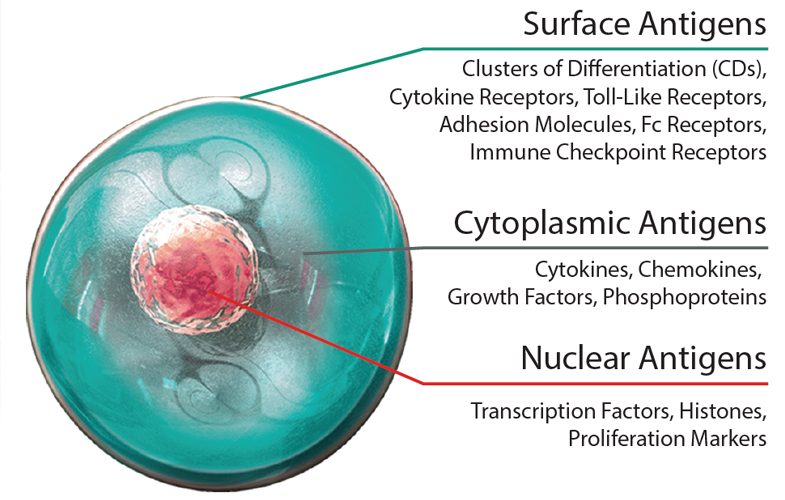Page Contents
Cells often communicate with one another by secreting soluble factors that are synthesized intracellularly before being released into the external milieu. Included among these, cytokines are a diverse family of proteins that have various immunomodulatory capabilities as well as being involved in processes such as cell differentiation and directed migration. While almost all nucleated cells can generate and secrete cytokines, T helper (Th) cells and macrophages are especially productive. Cytokines exert their effects through binding to receptors expressed on the surface of target cells in an autocrine (binding to the same cell) or paracrine (binding to a nearby cell) fashion. Receptor binding triggers intracellular signaling cascades that drive gene expression.
Chemoattractant cytokines, or chemokines, induce cell movement in response to a chemical gradient (chemotaxis). Their main role is to promote the directional migration of leukocytes, including their movement from the circulatory system into tissues, and vice versa. Chemokines bind to G-protein coupled receptors (GPCRs) on the surface of target cells to initiate intracellular signaling that drives cell movement. Chemokines may also be grouped according to their function; while inflammatory chemokines recruit leukocytes in response to cytokine release by inflamed tissue, homeostatic chemokines are expressed constitutively and have an essential role in normal cellular trafficking.
Growth factors are a heterogeneous group of proteins that control the growth and differentiation of various cell types. They are often named according to their source or target, with examples including platelet-derived growth factor (PDGF), vascular endothelial growth factor (VEGF), and stem cell factor (SCF). Other intracellular proteins commonly studied in the context of immunology include transcription factors and phosphoproteins, which regulate gene expression and are involved in cellular signaling, respectively.

 Login / Register
Login / Register 






Follow Us